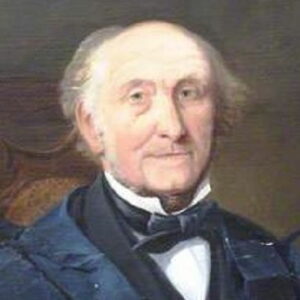William Hopkins was a famous British mathematician and geologist who wrote the book ‘Elements of Trigonometry’. Hopkins was expected to follow in his family’s footsteps after being born into an agricultural family. However, as fate would have it, he sold his farmland and used the proceeds to restart his life. After dropping out of school due to his family’s lack of educational values, William chose to continue his studies at the prestigious ‘Cambridge University.’ Despite his limited formal education, he was a top performer on the Mathematical Tripos examination. Due to his inability to obtain a fellowship, this brilliant student began working as a tutor for aspirants to ‘Senior Wrangler,’ the highest achievement a mathematics undergraduate can achieve. He was enormously successful in his endeavor, earning the title of’senior wrangler maker’. Later in life, he pursued studies in mathematics and demonstrated his prowess in the subject by publishing a highly sought-after book on trigonometry. His friendship with Adam Sedgwick, whom he accompanied on several expeditions, inspired a lifelong interest in geology. Hopkins began his research by examining the occurrence of faults and fissures on the Earth’s surface, followed by an examination of the earth’s rotation. The Geological Society of London commended his investigations, and he eventually became the committee’s President. Continue reading to learn about his life and accomplishments.
Childhood & Adolescence
Hopkins was the son of a gentleman farmer who rented his land to others in exchange for a share of the produce or profit. William was born on February 2, 1793, in the village of Kingston-on-Soar in the county of Nottinghamshire, but the family later relocated to Norfolk.
William was educated in agricultural practices in Norfolk, but he never developed an interest in the occupation. Following the death of his wife, he began anew and used the proceeds from the sale of his plot of land to pursue educational endeavors.
He enrolled in 1822 at the ‘Peterhouse College’, which was affiliated with ‘Cambridge University’. In 1827, he earned a bachelor’s degree in mathematics with honors.
Career of William
Following his outstanding performance in college, he began his career as a tutor, instructing undergraduate students at the University. He was equally successful in this endeavor, producing approximately 20 top mathematics undergraduates earning between £700 and £800 per year.
The future mathematician Edward Routh, physicist James Clerk Maxwell, and chemist William Thomson were among his students. After acquiring mathematician George Green’s notes from Hopkins in 1828, the latter worked on his ‘Green’s theorem.
William’s involvement with geology began in 1833, when he accompanied Cambridge colleague Adam Sedgwick on a series of geological expeditions. He began by attempting to explain the formation of fissures and faults across the earth’s surface using mathematics.
He postulated that an elevatory force operating beneath the earth’s crust is caused by the presence of hot vapours or fluid below and is responsible for the formation of fissures or faults on the surface. His theories conflicted with those of his nemesis Charles Lyell and were ultimately disproved.
Additionally, in 1833, he published his famous book ‘Elements of Trigonometry’ on the subject of trigonometry, a branch of mathematics.
Continuing his exploration of geology, between 1838 and 1842, he penned several scientific publications on the earth’s rotatory motion.
He also used his elevatory force theories to explain earthquakes and volcanoes. In 1847, the ‘British Science Association’ published his findings in this regard.
Hopkins then set out to investigate the effect of pressure on a substance’s melting point and thermal conductivity. He collaborated on his quest with Scottish engineer William Fairbairn and English physicist James Prescott Joule. After careful examination, the trio concluded that the melting point of a substance increases with increasing pressure.
After examining the factors that contributed to climate change, he concluded that the decrease in the earth’s temperature had no effect on the planet’s climate.
He also dabbled in glaciology, publishing several papers on the movement of glaciers, noting that rocks are carried by glaciers as they melt, explaining why some rocks found in a region differ in features from the area’s native rocks. These fragments of rock were dubbed ‘glacial erratics.’
Hopkins presided over the ‘Geological Society of London’s’ activities from 1851 to 1852. He also chaired the following year’s annual meeting of the ‘British Association,’ which was held in Hull.
Significant Works of William
William Hopkins’s most significant contribution to science was his theory describing the relationship between pressure and a substance’s melting point. He established that the two are directly proportional, and thus that the melting point of a substance increases as the amount of pressure applied to it increases.
Awards and Accomplishments
Hopkins’ contributions to geology were recognized by the ‘Geological Society of London,’ which bestowed upon him the highest honor, the ‘Wollaston Medal,’ in 1850.
Personal History and Legacies
Hopkins’ first wife died in 1821, and William remarried. His second marriage to Caroline Frances Boys lasted until the death of the former, and the couple had four children.
William suffered from chronic mania and exhaustion in his later years and died on 13 October 1866 in a psychiatric hospital in Hackney’s Stoke Newington district.
Estimated Net Worth
The net worth of William is $14million.
Trivia
This eminent scientist was an active member of the university’s cricket club during his years at Cambridge.


